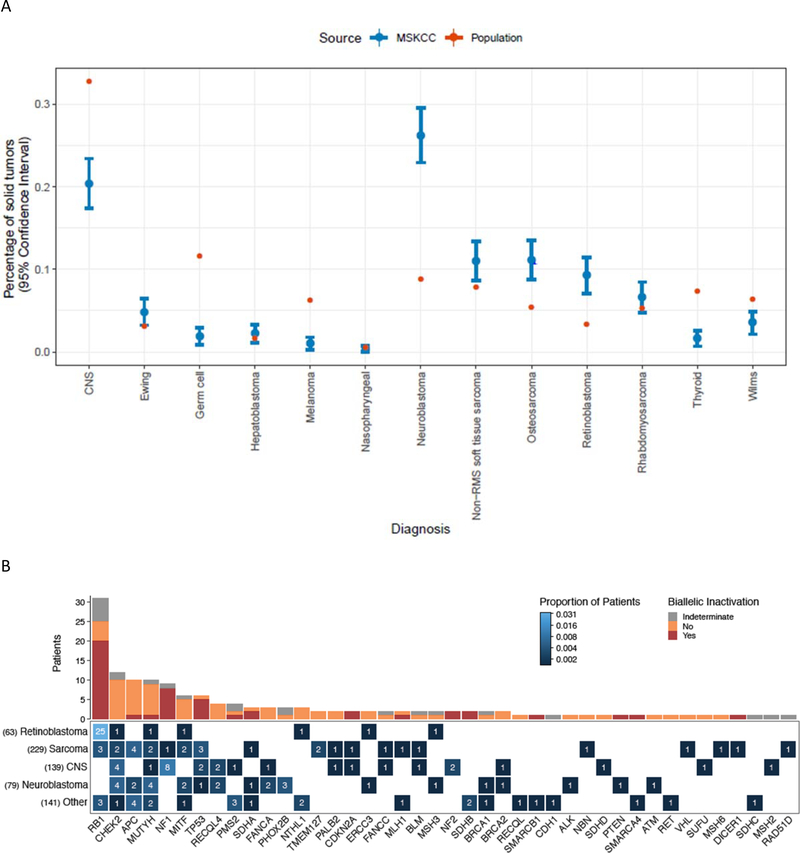Figure 1.
(A) Cancer types represented in the current study (blue) compared to the Annual International Childhood Cancer Classification (AICCC) distribution (red). Current study data is based on n=751 patients and shown with 95% confidence intervals. US census data (https://www.census.gov/quickfacts/fact/table/US/PST0452190) was used with AICCC data to calculate population percentages. (B) Germline P/LP variants and biallelic inactivation across 138 patients in the cohort. Bottom, the heat map shows the occurrence of germline P/LP variants across genes and cancer types. The color indicates the proportion of patients with a particular cancer type and germline alteration, and the number on the tiles indicate the absolute count. The total number of patients in the cohort for each of the cancer types is displayed on the left. Top, the absolute count of patients with biallelic inactivation in the genes shown on the x-axis. Biallelic inactivation includes loss of heterozygosity and second somatic hits. Patients for whom the allele status in tumor could not be assessed due to insufficient tumor purity, unavailability of sufficient tumor tissue, or low sequencing coverage in the tumor are indicated as indeterminate for biallelic inactivation.

